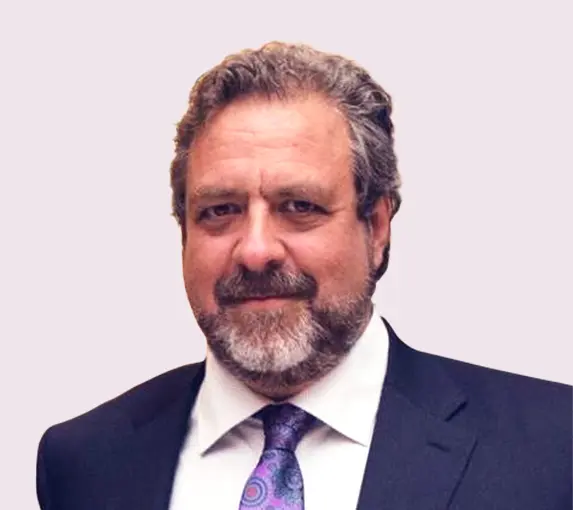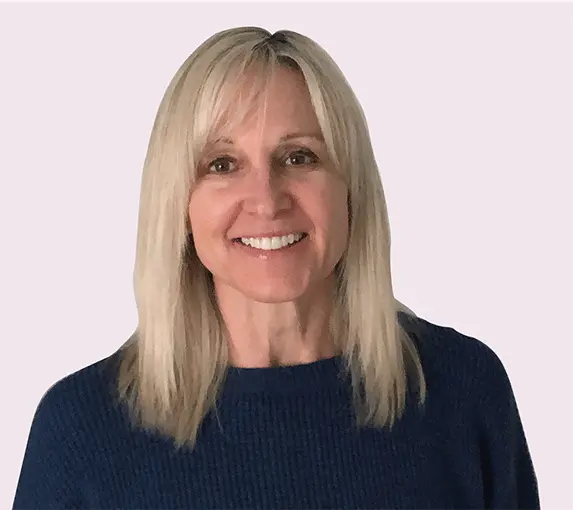
Episode 103: Functions, number and verbal problems, seeing the maths in things
Custard powder, Swan formations, and more. In this episode, Andy, Robin and Adam are joined by the amazing Tim Oates to discuss seeing the maths in things. Do we teach the everyday maths around us enough in schools? What topic is always presented in a confusing way to children? Plus, Tim talks on the importance of rich questions that push towards helping the understanding of mathematical structures.
More Podcasts on Education
Continue listening to our educational experts
Meet your instructors
The school of school podcast is presented by:

Andy Psarianos
@andy_psarianos

Adam Gifford

Robin Potter
Special guest instructor

Tim Oates CBE
Never miss an episode
Subscribe to get the latest The School of School podcasts delivered to your inbox.
Podcast Transcription
Andy Psarianos
Hi, I'm Andy Psarianos.
Robin Potter
Hi, I'm Robin Potter.
Adam Gifford
Hi, I'm Adam Gifford.
Andy Psarianos
This is the School of School podcast.
Welcome to The School of School podcast.
Robin Potter
Are you a maths teacher looking for CPD to strengthen your skills? Maths — No Problem! has a variety of courses to suit your needs from textbook implementation to the essentials of teaching maths mastery. Visit mathsnoproblem.com today to learn more.
Andy Psarianos
Welcome back everyone to another episode of The School of School podcast. We've got Tim Oates with us. Very exciting. So Tim, do you want to tell us a little bit about yourself?
Tim Oates
Thanks Andy, and thanks so much for the invitation to talk today. So yeah, I'm Tim Oates. I'm group director of assessment, research, and development at Cambridge University Press & Assessment. We're a big non-teaching department of Cambridge University. I run a research group of around about 40 people. And, we work in over 140 countries around the world providing assessment services, learning services, and we look at educational reform as well. I particularly enjoy looking at different education systems, have done that for years. Really thinking deeply about how different systems perform and drawing insights from those differences to improve education around the world.
Andy Psarianos
Tim, we're here with Adam and Robin here today, and we're going to talk about functions, number and verbal problems, Seeing the Maths in Things. Okay, what does that mean and what is this all about?
Tim Oates
Yeah. I mean, it's quite a careful title because people don't necessarily see the maths in things. The world is full of sense perceptions, isn't it? Colour, and shape, and movement, well, where's the maths in that? It's pretty bewildering. Maths is fascinating because it's a deeper structure. It's a structure within and beneath the surface of things. It exists in terms of relationships. Of course, we can find fascinating geometric patterns in the eyes of flies. But when we look at things like the ocean, where's the pattern in the turbulence? Where's the pattern in that? Where are the mathematical relationships between the things that we see around us? Gases, solids?
I mean, it's amazing that we have developed this language which apprehends laws, deep structures in things, that's been a remarkable human attainment. You're not born with an understanding of the kind of mathematics which we now use to understand the world deeply. You have to acquire it. You have to work at it. Some of the things we know. We can look at two oranges and know they're two oranges. Other things, the issue of say, for example, parabola and the relationship between velocity and distance in an object affected by gravity, that takes a long time to get hold of, and we have to teach that. Quadratics, not obvious, you have to learn it. But once you understand it, you can see that it applies to the real world. It helps you solve real things.
Andy Psarianos
I mean, we're all in awe, I'm in awe all the time. And when you start thinking that way, when you start thinking of the world in a mathematical sense, you very quickly recognise, well, I mean, it's almost a philosophy of mathematics is what we're discussing here because we don't even really know. I don't think we really understand, is mathematics a language that we wrote, that we invented? Or, is it something we observed? Is it just the nature of things and we're just recording it? I don't know that we even really have an answer for that.
Tim Oates
When I was young, I read a couple of things which really opened my eyes. So, one of them was, I just became interested in watching migrating swans. Why do they fly in a V? Why do Canada geese fly the way they do? Well, why do they do it? Turns out it's maths. The formation that they fly in, if they make a navigation error, it minimises that error and makes it easier for them to get back onto course. I mean, of course, we sorted out how they navigate. It's complicated, but the maths that they've adopted helps. Likewise, pigeons eating in fields - why do they cluster the way they do? And there's a mathematical reason for that. It's really, really efficient in terms of clearing the grain and the seeds in the field. That's when you begin to know that there are mathematical principles underneath the surface appearance of things, things that are remarkably persistent.
Andy Psarianos
That's right. And in that, even things that are really difficult to understand, and Marcus du Sautoy from Cambridge speaks a lot about this actually. The fact that that pie keeps showing up in all these places where there's no obvious circle and somewhere in there lurking as a circle, but we don't really know where it is. But it keeps popping up and especially in statistics and probability and like you say, "why do bees make their honeycombs in hexagons?" I mean, what a curious question, right? Well it turns out that's the most efficient tessellation you can do. So uses the least amount of wax. Now that's a fascinating thing. So there's maths everywhere you look in nature, in the universe in general. Do you think we teach enough of that in schools?
Tim Oates
Yeah, no, that's interesting. That's an interesting question. "Do we teach enough of that?" We could have application and the wonders of the outside world, is it kind of a thing that we go to every so often to try to keep kids interested?
Robin Potter
But you can do it more often, Tim, because I've had both my kids over the years say to me, "I don't understand. I'm never going to need this again." And usually they're talking about maths. "I'm never going to use this again. Why do I need to learn this?" So maybe if we did present it more often, as in it's in everything, there's maths everywhere, maybe they could get more excited about it. I don't know.
Tim Oates
Yeah, I mean I think what we need to do is to do what Japanese teachers do brilliantly, which is that they move between these things and the abstract representations and the language of mathematics continuously, not "okay, for the last few weeks we've been doing this, and by the way, there's this amazing thing that you can observe in the outside world" and presenting it just as a stimulus and sort of unrelated to the maths, no, no, no.
What you have to do is to move between these things and the abstract representation of mathematics continually, because then it encourages seeing the deep structure in the world and the meaningfulness and the power of mathematics. There was a great incident that happened outside the gates of a school in Kent where somebody had been teaching a particular programme called Cognitive Acceleration in Science Education. And it was in science, it helped kids to really accelerate their understanding of mathematics. And as Phillip Aiden was leaving the school, a child came up to him and said, "I want to talk about case. So Phillip said,"Oh, okay". And the child said, "I hate case, I hate it". And Phillip said, "Well what's the problem?" And so the child said, "It makes me think about science all the time."
And when Phillip began to talk to this kid, he realised that "boy, it was really working". This kid was beginning to really think "okay" about, he kind of proceeded with his intrusive thoughts but what we know from the research is if you encourage a child, if a child begins to think about something outside contact time, their attainment in the subject really begins to accelerate. And that's what I mean by this issue of functions, number and verbal problems, Seeing the Maths in Things. It has not just to be an exciting lesson, it has to shift the way you think, it has to shift the way you see the world.
Andy Psarianos
In Singapore, they actually state that, I can't remember exact the exact wording in the national curriculum, but the purpose for teaching mathematics is to improve someone's intellectual competence. So for them, I mean they go as far as stating that "we don't actually teach, obviously we want them to know all the things that we're teaching them, but the ultimate goal is for them to be able to make better logical decisions in their lives." And as a contributor, so let's say for us, we publish textbooks, how does that apply? How do we get that into the real world? Well, I can think of an example. Imagine that what we're teaching is ratio and proportion and we could just create some convoluted, very mechanical question around ratio and proportion and present it to them that way. But why not take the opportunity to, let's say, use a recipe for example, to teach ratio and proportion because now all of a sudden you can go so much deeper into the understanding of how the world works.
Because you can ask them a very simple question which will get their mind spinning in a, not everyone, some of them will just ignore the question because maybe they're not quite ready for it, but others will start pondering on things. So a recent example that I can think of is of a word problem was, it was a pizza dough recipe. And it was like, "okay, here's a recipe," something like, here's a recipe for making four circular, nine inch pizza doughs, right? Pizza bases. Now you want to make three. Now all the measures are given in different, so some are given in mass, some are given in volume, so you've got to do the calculation, even though they're in different, but some of them are given in time. So the amount of time that the dough needs to rise. So do you also need to perform that calculation for that?
If it's just mechanical, you're just going to do the same process for all the numbers, regardless of what the measures are, but it doesn't apply to all the measures. The rising time is the same because you've now separated them into three pieces instead of four pieces and you're going to put them on counter to rise, but the rising time stays the same. Why doesn't the rising time change and things like that, understanding these structures of mathematics and how the universe actually works. Those are great opportunities. Now if you ask that as a test question, a lot of people say that's a really unfair test question. I disagree. I think that's a great assessment question, but I don't know, what do you think of that?
Tim Oates
Oh, I think rich questions which actually push understanding as well as illustrating, being a good carrier of the concept, illustrating the concept and encouraging that iteration between the abstract expression of mathematics and the mathematical structure inherent in the real situation are just great and it's well worth undertaking research on, "which are really good questions and which are good problems". We looked at that in respect of science. Robin Miller has looked at that in terms of science. And what he's found is that there are some questions which are very revealing of structure and are worthwhile using year after year after year and being incorporated alongside other questions which elaborate the idea and having a battery of examples and questions, which then, you're not just relying on one context to encourage kids to understand the deeper structure. You can vary it and that helps with the understanding of all of the children in the group.
Fractions is a case in point. Again, very good studies of how Japanese teachers use real examples, different vessels full of liquid, boxes with sand and so on to present the abstract expression of the relationships in fractions through practical real world examples which really embed the understanding, and build up the understanding. I love things that can become elaborated. So an example is, well you have, there's a well, it is this kind of depth, you know, you give all the information. This is the speed, this is the rate at which something will fall. Now the question becomes quite important. "How do you know when it will hit the bottom?" So of course what the students do is they just look at it, they calculate the distance, they look at the distance, they look at the rate, the acceleration, and they say, "look, well it hits the bottom then."
And then you say, but that's not the question. The question is "how do you know when it hits the bottom?" Because you only know it hits the bottom and when you hear it, so you then got the speed of sound to take into the equation. Oh, now it's a really interesting question. So absolutely, Andy. I mean the point is it is not arbitrary how you choose these things. You choose them carefully. You choose them carefully because they are an excellent vehicle for carrying knowledge of the mathematical structure. They're not so opaque that you can't understand the deep mathematical structure, that wouldn't work. They have to be highly illustrative of the deeper mathematical structure, and they have to be age appropriate. But you can actually push kids understanding far more than people realise. I did this in respect and I'm afraid again, it's a science example. This is the one that immediately comes to mind. I did this in the respect of oxidation. So there were kids who were being shown that things can explode if they're a fine powder. It's very exciting for primary school kids.
Robin Potter
Absolutely.
Tim Oates
You can blow the lid off a tin.
Robin Potter
Explosions.
Andy Psarianos
He had a big kids explosion.
Tim Oates
Yeah. "Wow. how's that possible? cause it's a powder, so how's that possible? It's just custard powder." And indeed the demonstration was done and there was a bit of discussion and then I talked to the kids. As you say Robin, they were excited by it, but they hadn't, the questioning hadn't revealed what was actually happening, which was combustion. And for combustion there has to be a fuel, there has to be heat, there has to be oxygen. You know, you can immediately start to ask some questions which build up complex understandings of the process of oxidation. "Why doesn't just a pile of custard powder combust as opposed to when it's finally distributed in the air?" Because you've got the same, you've got the fuel and you've got the heat, but there isn't enough oxygen available to it until you distribute it.
Now what I've found is that if you push the questions with very young children, they can develop very complex ideas. But you have to know what question it is, which practical example you're going to use, a real world example. And it has to relentlessly, I mean a bit relentlessly drive towards the mathematical structure. And I think the question, the kind of question that you've just talked about, the kind of example, you could easily get sort of distracted, couldn't you, by just surface features of the issue of pizza dough. You have to make sure it constantly drives at the underlying mathematical structure.
Andy Psarianos
You highlighted here was the verbal problems. What role do verbal problems play in seeing the maths in things? Because I think a lot of people think mathematics, when I say a lot of people, I'm not talking about educators, I think mostly educators understand, but when you talk to parents or people who have not come through any kind of formal training on how to teach or why you teach or anything like that, they would think of mathematics as, call it "sums", which I know is not the right word, but that's what they think. Why are verbal problems important?
Tim Oates
Yeah, I mean verbal problems are important because they present the complexity of the context in which we find the mathematical structures. Most obvious example of a parents would be family debt, for example. That presents as a very complex problem to families and often families make poor decisions about incurring debt. And we've had big shocks recently about, in terms of what's been happening in the global economy, which has had impacts on interest rates which have retaken families by surprise. Well maths is at the heart of that, issues of growth in the economy, wage, wage-price relationships. It's only when we think about these more complex settings that adults experience that I think we can really hook onto is a discourse whereby they can understand the importance of mathematical education in schools.
But it's seeing the maths in things and knowing that if you approach certain things using mathematical techniques and mathematical understanding, you can take actions which are good for you, good for society, and good for the economy. That's where I would immediately start bridging between the immediate experience of parents and the realities of what their children need to learn at a pretty early age.
Adam Gifford
I think it strikes me too that something that is schools, it's really important that we foster that attitude because I think there is still an attitude that mathematics is just, or at least it's not responding to the world mathematically, it's just about finding correct answers in some people's view, like parents or possibly people outside of school. And it strikes me that the importance of what's being taught about here, there's such rich conversation to be had in terms of responding mathematically to the world and the creativity and the art, the artistic nature of it, and that it's a language in itself. And I think that for me, what comes across loud and clear is the importance that the subject itself, we need to make sure that it's seen in that way too to everyone.
Tim Oates
Yeah, I think that's absolutely right. And let's just look at a very simple thing, a seemingly simple thing. I think Andy, in the past, you and I have talked about the teaching of negative numbers and the fact that an awful lot of materials and textbooks teach negative numbers through the temperature scale. That is not negative numbers and it gives rise to a misconception amongst children. The late Richard Dunn said that "You need to teach negative numbers not as the movement, that way and that way, that way is positive, that way is negative with zero being the line in the middle, you need to teach it as the absence of something."
Now, just going back to family finances, we talk about a hole of debt, don't we? A big hole of debt opening up. Well, that's exactly how Richard Dunn would teach negative numbers. He would say "Imagine a house in which in the front you've got a pile, a pile which is one, a pile which is twice as big, which is two a pile, which is three times as big of earth, which is three. Well, in the back you've got a hole, which is one, a hole twice as big, which is two and a hole three times as big, which is three." Now, that's an appropriate way to teach or give bridge between a mathematical problem, a real world instance rather and a mathematical problem and the concept. And it's conceptually correct. Minus one is the absence of something. It's not just to the left of something.
Andy Psarianos
And don't get me started on the number line, but you're absolutely right. I mean I think that it's understanding that numbers have different types of representations and that just, there's this idea of cardinal numbers, there's this idea of nominal numbers, there's this idea of other manifestations through measurement and ordinal numbers and all these kinds of things. And sometimes we just take the easy way out and we just think what's the easiest real world type example I can come up with a negative number, let me use that. But not really challenging "what is the concept that I'm trying to teach here?"
That's why it's dangerous to let teachers write all their own content. I m.ean this is not me taking a stab at teachers, but people who make it their life's business to do this sort of thing, spend an awful lot of time thinking and researching and looking at the impact of doing it one way versus another. It takes a lot of time and it takes a lot of expertise and you can't leave some of those things to chance because you can get misconceptions in really early on that are hard to unpick later on if you do it wrong.
Tim Oates
That's why this topic is so important, Andy. I couldn't summarise the way in which we should approach this better than you have just done. It is very easy to choose a concept which is of immediate appeal, but can actually give rise to a misconception in the child's mind or in a group of children's mind. We know from Singapore maths, we know from the instances of verbal problems contexts in the textbooks that there is very thorough selection of particular instances to encourage application and to reveal the mathematical structure, and careful variation in those against a particular concept. It is something that has to be done systematically and in the light of good evidence. And a lot of the evidence is from good practise.
Andy Psarianos
And it's from good practise, but it's also from looking at what the long-term effect is of doing something and saying, "okay, well we did it this way, what happened, how do you judge whether or not your year three lesson is effective?" Maybe it's by what happens when those children go into key stage three?
Tim Oates
I had a great example of this. I was talking with some teachers where we were doing some international comparisons and it was some Japanese teachers and some Chinese teachers, and one particular question came up, which was "there is a pile of sand, where do you have to cut it to get one third of the pile of sand?" And I said, "The way that's expressed is very interesting and very challenging." And I asked the teacher and I said, "well, when did you first use that as an example?" He said, "No, well I've always used it. We've been using it for 500 years. It goes back to the first mathematical textbooks in China. Why wouldn't you use it?"
You see, this is very different from the kind of approach that we teach, which is, "Oh, you've got to be innovative, you've always got to use new stuff, don't use the same stuff over and over." It's a completely different approach. Why do you use it? Cause it works because it's been carefully chosen. Cause it reveals a mathematical structure. Because you can elaborate it to make it more complicated if the kids have already grasped it. You can ask the additional question, "ok that's when it hit the ground, at the bottom of the well but how do you know that it actually, how can you actually know that it hit the bottom" and then incorporate the speed of sound into it? You can elaborate these things.
Andy Psarianos
That's right. And otherwise you end up with answers like "how many children travelled in that car? It'd be three and one third children". No, there's no such thing as a third of a child, but that's what happens. And I'm sure people who write exam papers find those types of answers all the time because it's an example of a well-structured question. You can't put a third of a child in a car, so that's not the answer. So "how many children actually went in a car? Was it four or three?"
Tim Oates
Yeah. I came across this teacher who was using a particular set of examples in a primary school in terms of mathematics and science, and she said, "Oh, these are so boring I've used these for years and I think I'm going to use something different." And I said, "Well, why do you want to use something different? Do they work?" she said, "Oh yeah, they work brilliantly". "So just carry on using them. The only person who's bored is you, just don't let your boredom show."
Andy Psarianos
That's right. That's fair.
Tim Oates
Carry on. They're brilliant questions.
Robin Potter
I'm still working on the one third of a child in the car. That's very disturbing.
Tim Oates
But I think what we just described is something about pedagogy. It's something about how you create your own materials as a teacher. It's how you judge between materials. It's what people who produce materials should be concerned with. And we see this in the best and highest quality textbooks from Hong Kong, from Shanghai, from Singapore.
Andy Psarianos
Tim, one final question before we let you go. It seems to me, I might be wrong. It seems to me that there's a large, if you look at the mathematics journey that we push most people down, there's a more of an emphasis on calculus versus statistics and probability. Do you think we should have more statistics and probability in mathematics? If you look at where the world is going in the future, I think the push towards calculus has always been an engineering view of the world, but is there an argument for putting more statistics and probability back into mathematics? That's a very general question, I know, but I'd just be interested in knowing what you think.
Tim Oates
Oh, you might think it's a general question but there's quite a specific thing going on in England about this. Okay. I'm going to reveal quite something that may sound quite traditional, but we introduced different roots in our advanced level qualifications. In other words, 16 to 18 prior to university, roundabout the 1970s, we began to introduce a statistics route and before it, there'd been a strong mechanics route. Boy, you should have seen the kids migrate to statistics. Actually, that created quite a problem in our system. If you set them up in opposition, one with another, then you can get ready migration. I don't think it's about setting them up in opposition. I think you can have a kind of different flavour, but if you completely remove mechanics from 16 to 18, and you introduce it as well, you can do statistics or mechanics, then I think actually you've got a problem.
If you look at say, the German system, then you can major a bit more in statistics, but hell, you can't escape the mechanics. Likewise, if you are really committed to mechanics, you still need to do some statistics. I think that's about the right sort of balance. I do like an upper advanced system where people can follow their preferences and their aspirations. I think that's a time in education when we can begin to really follow people's aspirations and preferences because that means they're enjoying themselves and they really probably learn more. That's a good thing for them. But I think it sounds terrible. I think it's a question of balance. We don't want one to the exclusion of the other.
Andy Psarianos
Tim, always a pleasure speaking with you. Thank you so much for joining us today.
Tim Oates
Well, thank you very much, Andy. It's been a real pleasure today. Thank you very much.
Andy Psarianos
Thank you. Joining us on the School of School podcast.
More Podcasts on Education
Continue listening to our educational experts
